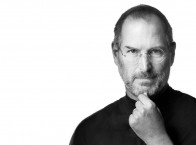Everyone actually knows about IBM. It is a tech giant that towers over the computer world.
Okay, but what else do you know about it?
In case you want to understand further, you can read this amazing list:
1. IBM, the global tech titan had its birth in New York City a century ago. It got incorporated into the Big Apple.
2. Invented by Herman Hollerith, it was called the 'Tabulating Machine Company' in 1896. A few years later, in 1911, it got another name - 'Computing-Tabulating-Recording Company'.
3. The full form of IBM is, as you know, is "International Business Machines. This name came to be attached to the firm as its earlier name of International Business and Pleasure Machines" sounded puzzling and odd.
4. It was in 1924 that the company finally became the International Business Machines.
5. Five IBMers got the Nobel Prize for amazing science and technological breakthroughs. They included Leo Esaki for semiconductors, George Bednorz and Alex Bueller for superconductivity research and Gerd Binning and Heinrich Rohrer for scanning tunneling microscope. None of the names of the inventions may strike a bell in you, but the term 'Nobel Prize' for five scientists sure does!
6. How did IBM get to be called 'Big Blue'? A number of theorists have a number of theories about this. As blue was being continuously used in its products and logo, the name seemed to stick. One more explanation is that it came from a loyalist who dubbed the company a 'True Blue' firm.
7. In the beginning of the last century, most executives stuck to a formal, though stylish dress code. The men followed a uniform code of "pin-striped suits, white button-down shirts, rep ties and wing-tipped shoes." Just sauntering into the IBM offices and watching those uniformed men could actually make you feel that you've entered a strange zone. Many years later, IBM's fashion stylists helped to usher in a more casual look.
8. Since 1914, IBM was an employee-friendly company, being among the first to offer group life insurance, survivor benefits, and special training programs for disabled sections. IBM also created employee sports teams and the Quarter Century Club in order to honor those who have spent the quarter of a century with the organization.
9. An IBM researcher helped to invent the interesting classic ThinkPad Butterfly keyboard. In the mid-90s, it was a puzzle that could be lugged around. It all began when a researcher helped his daughter to solve a puzzle. It egged him to make a keyboard invention.
10. Somehow, Steve Jobs hated IBM. The former Apple CEO based his company's logo, 'Think Different' on IBM's 'Think' logo. But was it really different? Perhaps...
11. The tabulating machine managed to lock some information on holes that had been punched into a 3-by-7-inch card. This created a revolution in data and tabulation of information from the 1890 census. Being a good example of data processing, the practice of punched cards was followed till the early 1970s.
12. Using electromechanical counters was also passe till the first computers began to be used in the 1950s.
13. The early '70s saw the use of credit cards that were popular but constituted a time-consuming and labor-intensive process. IBM developed the magnetic strip that is still used to read a lot of credit cards today.
14. IBM even reached out to the moon! It got involved in the Apollo missions with 4,000 employees working on computer systems. With 4K of ram, the mission was a success.
15. The process automatically led to the development of bank ATMs as well as self-serve airline kiosks that quickly dispensed boarding passes.
16. IBM invented the bar code and scanners too. These were awesome tools that could find solutions to speed up checkout lines and automate inventories for groceries.
17. Do you remember the chewable Wrigley's Juicy Fruit gum? It was the first item to be swiped in Troy, Ohio. This system was efficient and easy, and soon became the standard practice for the grocery industry.
18. That cool technology was also the basis for the point-of-sale systems that are used by everyone today.
19. It was in 1967 that the company worked on a technique to feed instructions into the mainframe computers. The information was transmitted by a legacy of punched cards or magnetic tape.
20. A smaller 8-inch Mylar disk with a magnetic coating was also developed so that it could be pushed into the computer.
21. The development of personal computers in the early 1980s helped to create the floppy disk drive. This was quite a revolution! It helped to develop the software industry, with the writing, packaging, and selling of the products to users.
22. The Simon Personal Communicator was released by IBM in 1994. It was way before Apple launched the revolutionary iPhone. It was a huge handset and did not have a web browser support. Still, it had email access and fax sending ability.
23. In the early 1980s, LASIK, or Laser-assisted in-situ keratomileusis eye surgery was developed.
24. In 1995, LASIK went on to create a medical vision-correction operation. That helped to reshape the cornea and the vision and lead to speedy healing.
25. After a test on scraps of Thanksgiving turkey in the early 1980s, IBM developed the excimer laser. This was a cool device that helped to develop pulses of ultraviolet light and etch plastic. It broke molecular bonds on the top surface of the scraps but did not burn the tissue around it at all.
26. The IBM Deep Blue computer won a chess match against Garry Kasparov in just six games. With the help of brute force, Deep Blue could assess 200 million chess positions per second. With mathematics and processing speed, the chess pieces were assigned point values.
27. About a 100 years of games played by grandmasters and developed by Deep Blue were programmed and inserted into Deep Blue.
28. The Russian grandmaster got actually unnerved when Deep Blue used a move that he thought was too sophisticated for a computer. It was only years later that researchers found that the computer hadn't used a brain. It could not decide which move to make, so it had used a random step that unnerved the human!
29. Just 14 years later, the 'Watson' computer defeated two grandmasters in the 'Jeopardy!' game.
30. IBM has forged ahead with business applications, applying data analytics, cognitive computing, and cloud solutions. The applications are now applicable to all fields, right from medicine to cyber security.

 Share on Facebook
Share on Facebook





















